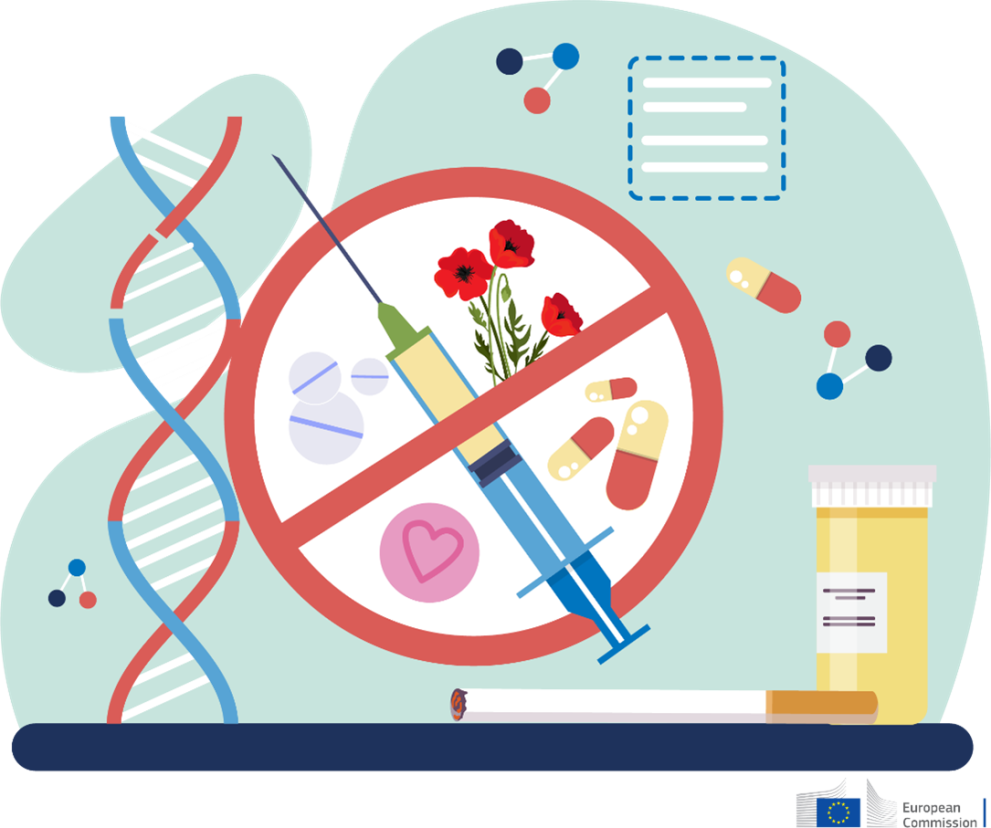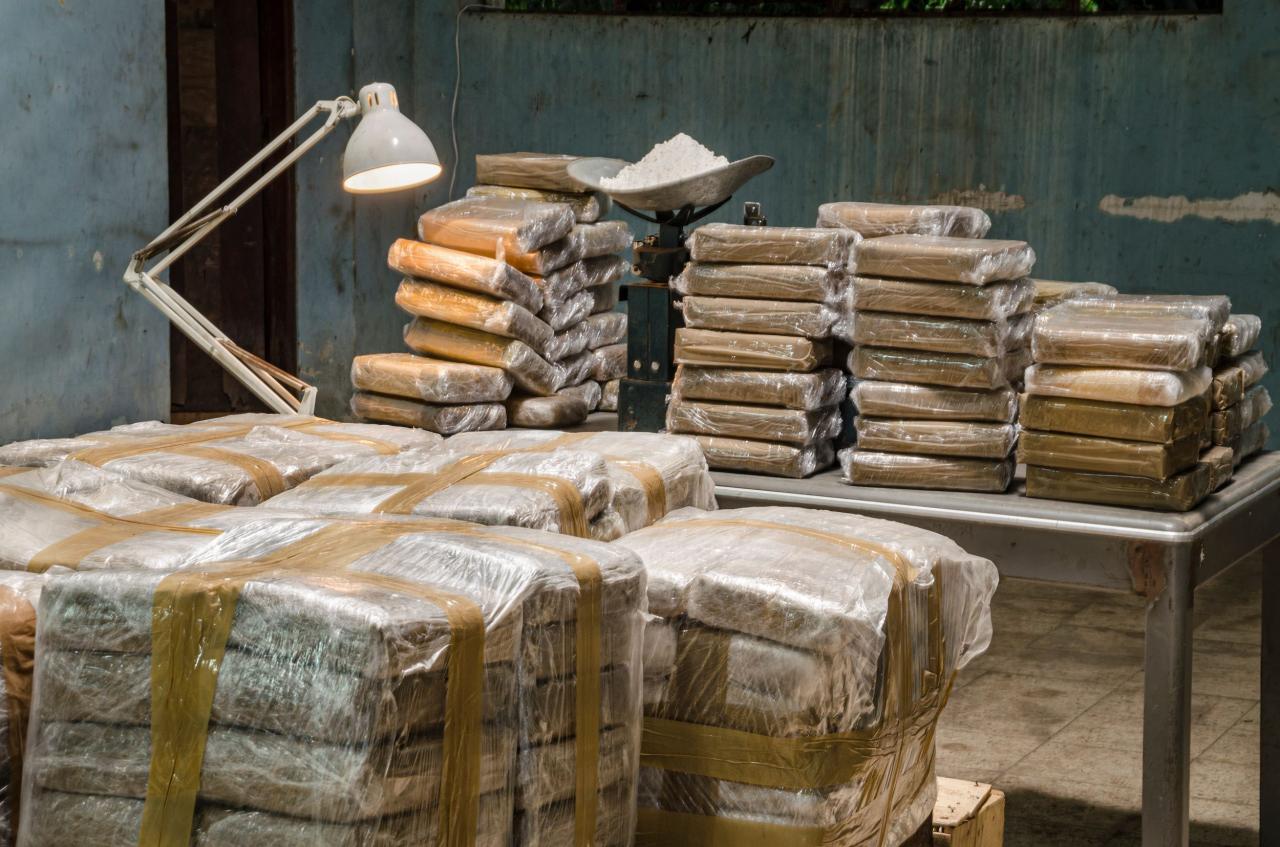
European Gangs Improve Illegal Drug Production
European gangs are getting better at making their own illegal drugs, and it’s a trend with serious implications. For years, European criminal organizations relied heavily on importing drugs, but a shift is underway. This rise in domestic drug production is driven by a complex interplay of factors, from readily available online information and technological advancements to socioeconomic pressures and evolving law enforcement strategies.
We’ll delve into the specifics of this alarming trend, exploring the types of drugs being produced, the challenges faced by law enforcement, and the potential consequences for the future of organized crime in Europe.
This isn’t just about a few small-time operations; we’re talking about sophisticated criminal networks refining their techniques and expanding their capabilities. The consequences extend far beyond the criminal underworld, impacting public health, community safety, and international relations. This blog post aims to shed light on this critical issue, providing a comprehensive overview of the situation and exploring potential solutions.
The Rise of Domestic Drug Production in Europe: European Gangs Are Getting Better At Making Their Own Illegal Drugs

For decades, European criminal organizations relied heavily on importing illicit drugs from major production hubs like South America and Southeast Asia. However, a significant shift is underway, with a marked increase in domestic drug production within Europe itself. This change represents a complex interplay of factors, altering the dynamics of the European drug market and posing new challenges for law enforcement.
Factors Contributing to Increased Self-Sufficiency
Several factors have contributed to the growing self-sufficiency of European gangs in drug manufacturing. Increased border security and stricter import controls have made smuggling more difficult and expensive. Simultaneously, advancements in drug synthesis techniques, readily available online information, and the relative ease of obtaining precursor chemicals have lowered the barrier to entry for domestic production. The increased profitability of producing drugs locally, avoiding the risks and costs associated with international trafficking, further incentivizes this trend.
Finally, the fragmentation of criminal networks and the rise of smaller, more agile gangs operating within specific regions have enabled decentralized drug production closer to consumer markets.
Comparison of Imported and Domestically Produced Drugs, European gangs are getting better at making their own illegal drugs
Historically, European gangs primarily trafficked in drugs imported from outside the continent, such as cocaine, heroin, and cannabis. While these drugs remain significant, domestic production is focusing on synthetics like methamphetamine, MDMA (ecstasy), and various designer drugs. These synthetics often offer higher profit margins due to lower production costs and the ability to tailor the product to specific market demands.
The shift towards synthetic drug production reflects a change in consumer preferences and the adaptability of criminal organizations to exploit emerging trends. The ease of production and distribution of synthetics, compared to the logistical complexities of importing cocaine or heroin, also contributes to their popularity among criminal groups.
Cost-Effectiveness of Importing vs. Domestic Production
The economic advantages of domestic production are clear in many cases. While the initial investment in equipment and expertise might be substantial, the long-term cost savings and reduced risks often outweigh the costs of importing. The following table illustrates a simplified comparison, acknowledging that actual costs can vary significantly based on location, scale of operation, and the specific drug:
| Drug Type | Import Cost (per kg) | Production Cost (per kg) | Profit Margin (per kg) |
|---|---|---|---|
| Cocaine | €50,000 – €80,000 | N/A (Imported) | Variable, highly dependent on import costs and market price |
| Heroin | €40,000 – €60,000 | N/A (Imported) | Variable, highly dependent on import costs and market price |
| Methamphetamine | €20,000 – €40,000 (if imported) | €5,000 – €15,000 | Significantly higher profit margin for domestic production |
| MDMA | €15,000 – €30,000 (if imported) | €3,000 – €10,000 | Significantly higher profit margin for domestic production |
Note: These figures are estimates and can vary widely depending on various factors. The “Import Cost” for synthetics reflects scenarios where precursor chemicals are imported and then processed domestically. The significant difference in profit margins for synthetics highlights the economic incentive driving the shift towards domestic production.
The Future of European Gangs and Drug Production

The rise of domestically produced drugs in Europe marks a significant shift in the landscape of organized crime. This trend, fueled by technological advancements and increasingly sophisticated criminal networks, presents a complex array of challenges for law enforcement and poses significant implications for the future of drug trafficking and societal well-being across the continent. Understanding these implications is crucial for developing effective countermeasures.The increasing self-sufficiency of European gangs in drug production has the potential to dramatically reshape the European drug market.
This self-sufficiency reduces reliance on external suppliers, making these gangs less vulnerable to disruptions in international supply chains. Simultaneously, it empowers them to control every stage of the drug production and distribution process, maximizing profits and minimizing risks associated with external partnerships. This vertical integration within criminal organizations enhances their power and resilience.
Implications for Drug Trafficking and Organized Crime
Increased domestic drug production will likely lead to a fragmentation of the European drug market. Smaller, more localized criminal groups could emerge, competing with established transnational organizations. This increased competition could lead to heightened violence as gangs fight for market share and control of key resources, including precursor chemicals and distribution networks. The example of the escalating violence between rival drug gangs in certain areas of the UK, driven by competition for local markets, provides a worrying precedent.
The diversification of drug types produced domestically also poses a challenge, requiring law enforcement to adapt their strategies and resources to combat a wider range of substances.
Strategies for Mitigating the Threat
European governments need to adopt a multi-pronged approach to combat the growing threat of domestically produced drugs. This includes strengthening law enforcement capabilities through improved intelligence gathering, targeted investigations, and increased resources for forensic analysis. Furthermore, focusing on disrupting the supply chains of precursor chemicals is vital, as this would severely hamper the ability of gangs to produce drugs on a large scale.
Finally, comprehensive public health strategies, including harm reduction programs and drug education initiatives, are necessary to address the underlying causes of drug use and minimize the social consequences of drug abuse. The success of Portugal’s decriminalization policies in reducing drug-related harm serves as a potential model for other European nations to consider, albeit adapted to their specific contexts.
Impact on Drug Prices and Availability
The impact of increased domestic production on drug prices and availability is complex and likely to vary depending on the specific drug and location. In some cases, increased domestic production could lead to lower prices and increased availability, making drugs more accessible to a wider population. This increased accessibility could exacerbate existing social problems and place further strain on healthcare and social services.
However, in other instances, increased competition among criminal groups could lead to price fluctuations and even shortages, depending on the dynamics of the local market. The experiences of different regions within Europe will likely differ significantly, reflecting varying levels of enforcement, criminal group organization, and market demand.
Potential for Increased Violence and Competition
The rise of domestic drug production is likely to fuel increased violence and competition between criminal organizations. As gangs vie for control of production sites, distribution networks, and market share, the potential for armed conflicts and turf wars increases significantly. This increased violence could spill over into communities, impacting public safety and potentially destabilizing already vulnerable areas. The example of certain regions in Eastern Europe, where escalating conflicts between rival drug gangs have resulted in a surge in violent crime, illustrates the potential severity of this threat.
This necessitates a proactive approach by law enforcement agencies to prevent escalation and protect vulnerable communities.
The increasing ability of European gangs to produce their own illegal drugs represents a significant and evolving threat. While law enforcement agencies are adapting their strategies, the ease of accessing information and technological advancements continue to empower criminal organizations. The socioeconomic factors fueling this trend further complicate the situation, highlighting the need for multifaceted approaches that address both the supply and demand sides of the problem.
Understanding the complexities of this issue is crucial for developing effective strategies to combat this growing challenge and protect communities across Europe.
Seriously, European gangs are upping their game – their homemade drug labs are getting increasingly sophisticated. It’s a whole other level of concern, especially considering the political climate; I just saw that Tulsi Gabbard endorsed Republican Adam Laxalt for Senate – check out the details here: midterm elections updates tulsi gabbard endorses republican adam laxalt for senate.
This kind of political shift might impact how seriously law enforcement tackles the growing problem of domestically produced illegal drugs in Europe.
It’s crazy how European gangs are increasingly self-sufficient, mastering the production of their own illegal drugs, reducing reliance on external suppliers. This shift in the drug trade highlights the unpredictable nature of global markets; a similar instability is why, as explained in this insightful article, why investors should still avoid chinese stocks , investors should proceed with caution.
Ultimately, both situations underscore the importance of understanding complex, evolving supply chains before making major financial or strategic decisions, especially when it comes to the volatile nature of illegal substances and international markets.
Seriously, European gangs are upping their game – they’re becoming increasingly self-sufficient, producing their own drugs instead of relying on external suppliers. It’s a worrying trend, mirroring how some politicians operate, like the discrepancies highlighted in ocasio cortezs campaign finance records website contradict claims that merchandise profits go to charity , where promised charitable donations seem to be…mismanaged.
This kind of internal financial manipulation, though on a different scale, shows a similar pattern of prioritizing personal gain over stated intentions, much like these increasingly independent drug operations.

